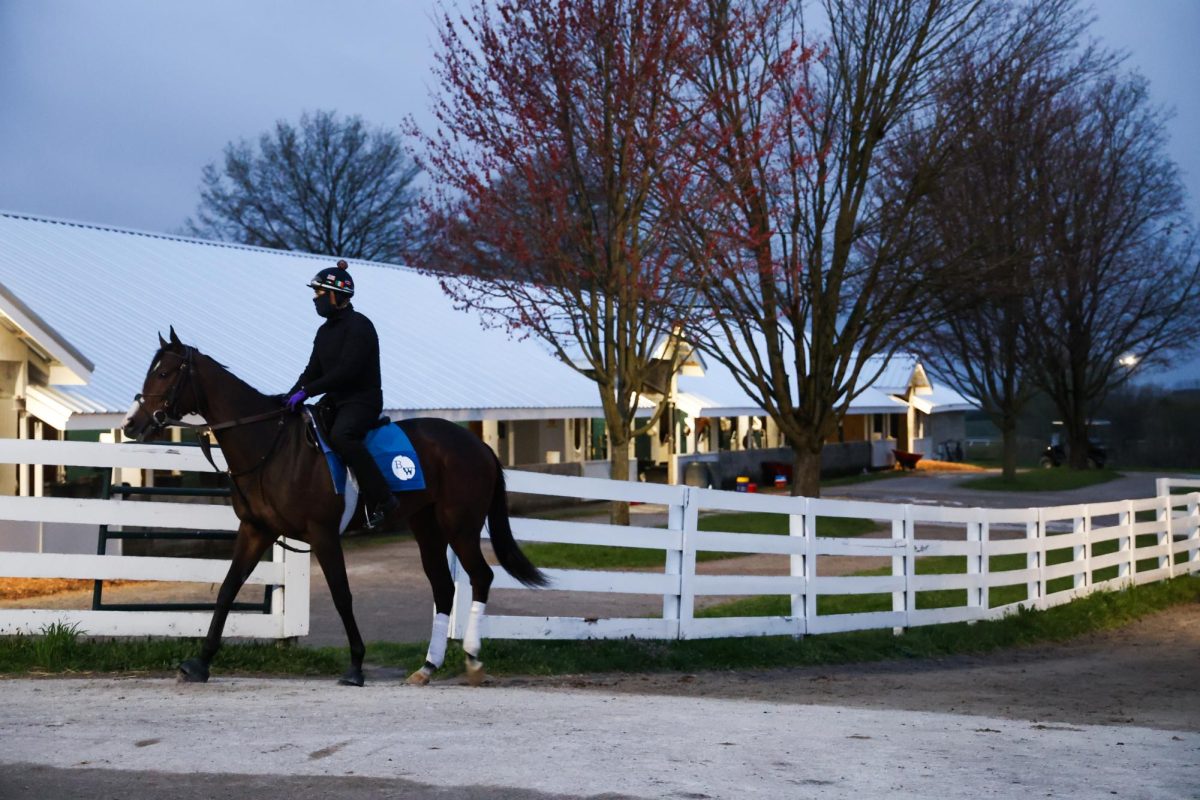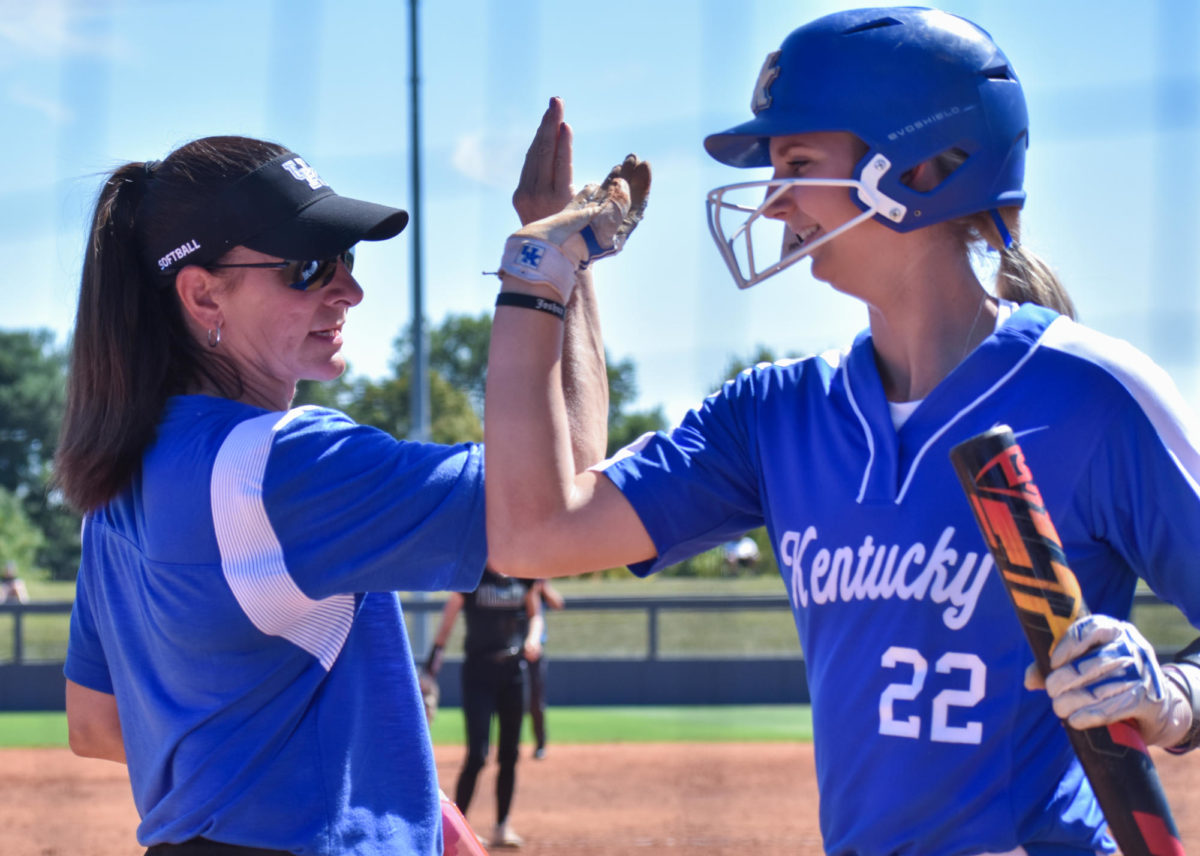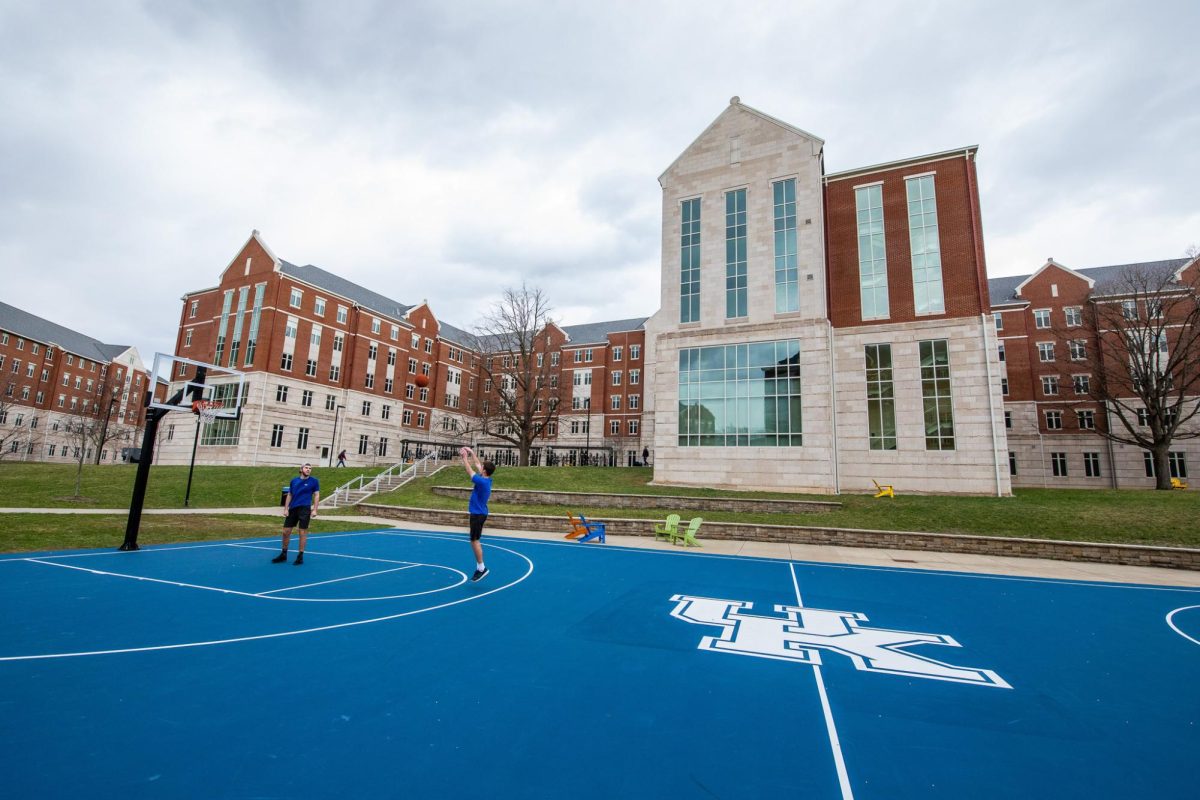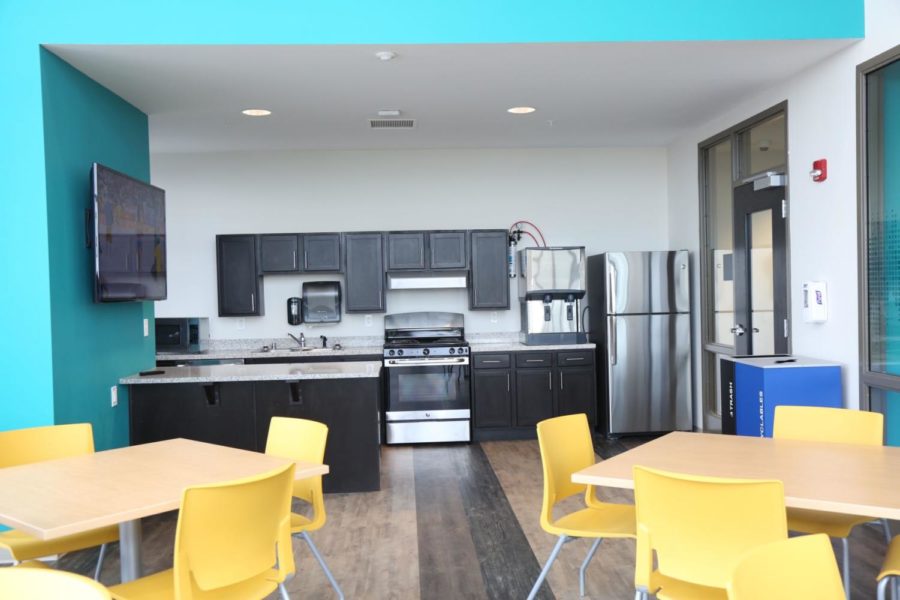Dorms designed with psychology in mind
Holmes Hall has five kitchens in the dorm, including one on the seventh floor with a high rise ceiling and a view of downtown Lexington.
August 18, 2017
It’s a simple truth: the closer the friendships you make at a college, the more likely you are to stay there. Colleges are obsessed with retention, and they’ll do anything to increase it – extensive on-campus activities, awesome restaurants at student centers, huge building renovations – but past all of that intricate planning (and money), psychology can offer a simpler solution.
Dorm buildings have several staff-based strategies meant to keep students entertained and happy, but architects and housing planners are starting to use another, subtler method of manipulation: design.
Individual bedrooms are the new norm in dorms, but having plenty of lounges and common areas are shown to be more conducive to bringing students together and helping them make friends. To give students the best of both worlds, designers create individual bedrooms, but they make them small enough that students don’t want to stay in them all of the time. They go out to common rooms and study lounges to have a change of environment and are more likely to meet people.
The lounges, themselves, are built to attract students and build a sense of community. While couches and soft chairs are important for the casual feel of a lounge, the more important and most used seats are those closest to power outlets. Dorms can even manipulate the Wi-Fi so it’s noticeably faster in common areas than it is in bedrooms.
Kitchens and laundry rooms are also made to draw students to each other. Placed in common areas (and often near study lounges), students hang out while doing their laundry instead of holing themselves inside their rooms. The more opportunities a school has to draw students out of their rooms, even for mundane tasks, can make all the difference when building a community and, in turn, improving a student’s chances of feeling like they belong.
To read the full article by The Chronicle of Higher Education, click here.



















































































































































